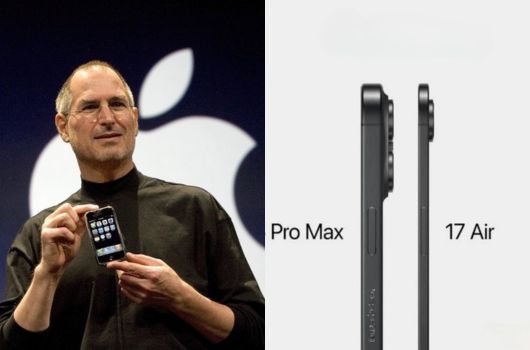The Legacy of the iPhone: The Journey of the Product That Redefined Technology 📱
Apple officially entered the smartphone era in 2007, when Steve Jobs introduced the first iPhone in an event that would change the world.
What set it apart from the competition at the time was its radical commitment to multi-touch screens, completely eliminating physical keyboards.
This intuitive and elegant form factor quickly became the industry standard, influencing the entire generation of mobile devices that followed. Since its launch, the company has released new models annually, evolving and refining the user experience.
The future of the product continues to be written, with the latest innovations being revealed in the models iPhone 17.
The news includes the end of the Plus model, which will be replaced by the new iPhone 17 Air, the brand's thinnest smartphone ever developed, measuring 5.5 to 6.6 millimeters thick. The cameras will also receive major changes, with a new horizontal module design for the Pro models and an improved 24-megapixel front-facing camera across the line.
The iPhone 17 Pro Max promises to be the most advanced in photography, being the first to incorporate three 48-megapixel cameras (wide angle, ultra wide angle and telephoto) and 8K video recording.
The improvements extend to the internal hardware. The Pro models now use aluminum instead of titanium to improve heat dissipation by up to 40%. Battery life has also been improved, with the Pro Max offering up to 39 hours of video playback, the longest ever recorded on an iPhone.
Additionally, vapor chamber cooling technology will be included in the Pro models to prevent overheating during intensive tasks.







